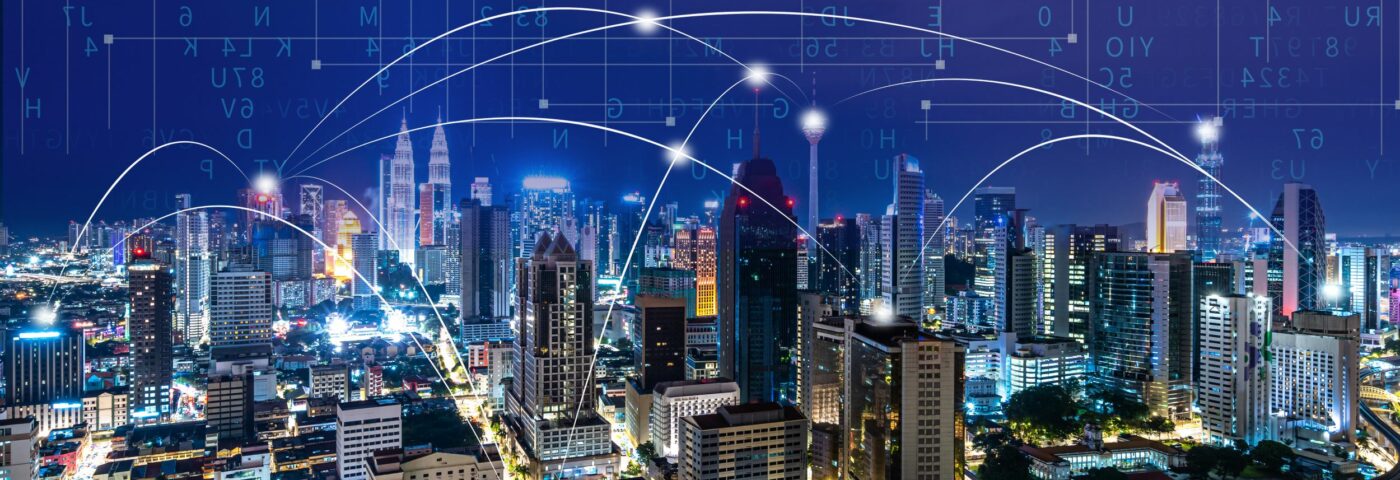Key Highlights
- 64% of the British population supports building new grids to boost energy security and decarbonise the economy.
- Through intelligent monitoring, smart grids empower energy providers and consumers alike to harness the potential of renewable sources.
- Utilising green concrete can reduce the amount of CO2 emissions released into the atmosphere during its production process.
- The Internet of Things (IoT) capabilities of real-time monitoring and controlling various systems are providing valuable insights into energy usage patterns.
- Building-integrated photovoltaics (BIPV) systems offer the advantages of material and electricity cost savings, pollution reduction, and enhancement of a building's architectural aesthetics.
As the world grapples with the escalating consequences of climate change, the urgent need to reduce carbon emissions has taken centre stage. One of the key battlegrounds in this fight is the built environment, encompassing all human-made structures, from homes to commercial buildings. The challenge is formidable, but so is the potential of technological innovations that are revolutionising the way we construct, power, and operate these structures.
Read on below to explore some of these cutting-edge technologies that are spearheading the decarbonisation of the built environment, ushering in a more sustainable and greener future.
Smart Grids: Paving the Way for Efficient Energy Distribution
Recent polling conducted by Survation, commissioned by RenewableUK, reveals that a substantial 64% of individuals are in favour of the development of new electricity grid infrastructure. With a resounding demographic of the British population backing the construction of new grid infrastructure to bolster energy security and drive the decarbonisation of the economy, the momentum behind smart grids is clear.
These sophisticated networks represent a quantum leap forward from conventional grids, harnessing technology to optimise energy generation, distribution, and consumption within the built environment. Smart grids bring together advanced sensors, communication networks, and automation that reshape the way energy is managed. Unlike traditional grids that supply a constant stream of electricity, smart grids can intelligently match energy supply with demand, minimising waste and reducing carbon emissions.
One of the standout features of smart grids is their ability to seamlessly integrate renewable energy sources like solar and wind power. By harnessing real-time data on energy generation and consumption, smart grids ensure that clean energy sources are utilised to their fullest potential, enabling a significant reduction in the reliance on fossil fuels.
Join Dcarbonise 2024 in Shaping a Sustainable Future
Dcarbonise is Scotland's only exhibition and conference focused on reducing carbon emissions from the built environment and transportation systems. Together, let's redefine the possibilities for a sustainable future.
Energy-Efficient Materials: Redefining Construction Practices
The construction industry is notorious for its resource-intensive nature, but the emergence of energy-efficient materials is challenging traditional practices. These innovative materials are designed to have a lower carbon footprint, both during their production and over the lifespan of the structures they are incorporated into.
One prime example is the rise of "green concrete," which reduces carbon emissions by incorporating alternative cementitious materials and minimising the need for traditional Portland cement. In fact, green concrete reduces the concrete industry's CO2-emissions by 30%. Additionally, advanced insulation materials and glazing technologies are enhancing the energy efficiency of buildings by minimising heat loss and optimising temperature regulation.
IoT-Enabled Systems: Enhancing Operational Efficiency
The Internet of Things (IoT) has made its mark in the built environment by enabling real-time monitoring and control of various systems. From heating and cooling, to lighting and occupancy, IoT devices are providing valuable insights into energy usage patterns. This data-driven approach allows building managers to make informed decisions that optimise energy consumption and minimise waste.
For instance, smart thermostats can adjust heating and cooling based on occupancy and external temperature conditions, ensuring that energy is only used when needed. Similarly, intelligent lighting systems can automatically dim or turn off lights in unoccupied areas, reducing electricity consumption.
Building-Integrated Renewable Energy: Powering the Future
The transition to renewable energy sources has gained significant momentum, and the built environment is increasingly becoming a hub for clean energy generation. Building-integrated photovoltaics (BIPV) exemplify this trend, as solar panels are seamlessly integrated into the design of buildings, such as solar facades, roofs, and windows. These integrated systems not only generate renewable energy but also contribute to the aesthetic appeal of structures.
Moreover, innovative solutions like kinetic energy harvesting from footsteps in high-traffic areas and piezoelectric materials that convert vibrations into electricity are pushing the boundaries of sustainable energy generation within buildings.
Overall, as these innovations gain traction and evolve, they are paving the way for a future where buildings are not just structures but active participants in the fight against climate change. Embracing these technological advancements will not only drive down carbon emissions but also lay the foundation for a more sustainable and resilient built environment for generations to come.

